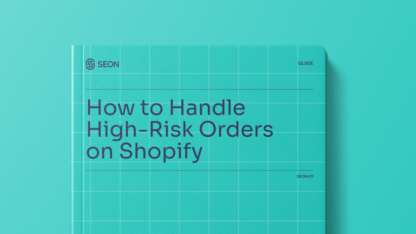It’s here. Black Friday and Cyber Monday are upon us. These global phenomena, which originated in the U.S. in the 1960s to describe the chaos that ensued in Philadephia when large crowds of shoppers would flood the city for post-Thanksgiving sales after the annual Army-Navy football game, have transformed into international celebrations of commerce, offering unprecedented opportunities for retailers.
However, these events also attract fraudsters who seek to exploit the surge in transactions. With that in mind, let’s explore the top trends and actionable strategies for combating fraud during the season of high-stakes shopping.
Black Friday & Cyber Monday Fraud Trends
In recent years, Black Friday and Cyber Monday have set new benchmarks for online shopping. In 2023, total online sales during this period reached $11.3 billion in the U.S. alone, and global participation only continues to grow. The convenience of ecommerce, coupled with irresistible deals, makes this a lucrative period for merchants – and an attractive target for fraudsters.
Cybercriminals capitalize on the urgency and excitement of these shopping days, targeting both consumers and businesses with sophisticated scams. According to recent data, over 53% of consumers report being targeted by fraudsters during the holiday shopping season, posing risks for merchants through chargebacks, account takeovers and other costly forms of fraud. Here’s how you can mitigate those risks.
1. Coordinate Teams for Peak Volume and Fraud Risks
Prepare all departments – operations, risk management, sales and customer support – for the seasonal surge. Share insights about potential fraud vectors, from promo code abuse to social engineering attempts, and ensure that lessons from prior years are applied effectively. If traffic is expected to spike significantly, consider bringing on temporary support staff or deploying automated fraud prevention solutions to reduce manual workloads and eliminate errors.
Discover how fraud surged and evolved during the last seasonal shopping surge.
Read Here
2. Adjust Risk Rules for Seasonal Spending Patterns
Promotional events often lead to unusual shopping behaviors, such as higher transaction values or rapid purchases. Review and modify your velocity rules and fraud detection parameters to account for this, avoiding false positives that might drive loyal customers to competitors.
3. Leverage Last Year’s Data to Strengthen Detection
Analyze past transaction data to identify fraud patterns and chargeback trends. Feeding these insights into your machine learning (ML) systems can improve detection accuracy for this year’s sales. If you use customizable tools, run simulations to evaluate the performance of updated rules before deployment.
4. Guard Against Account Takeovers (ATO)
Fraudsters often target accounts with stored payment methods during high-traffic events. Enhance your defenses by monitoring login behaviors for suspicious activities, such as logins from unusual devices or locations, sudden password changes and modifications to shipping addresses. Proactively block suspicious accounts and notify users of attempted breaches.
5. Train Teams on Social Engineering Prevention
With customer service teams under pressure, fraudsters may exploit them through social engineering tactics. Regularly update and rehearse your team’s verification protocols, ensuring they know how to spot red flags and validate customer identities effectively. Equipping agents with tools for real-time digital footprint analysis can provide an added layer of protection.
6. Boost Fraud Detection with SEON
With real-time digital footprint analysis, device intelligence, machine learning capabilities and modular risk-scoring tools, SEON empowers teams to identify and stop fraud efficiently. No integration is needed to get started, and batch uploads are available for high-volume review processes.
Wrapping Up
Black Friday and Cyber Monday are golden opportunities for businesses, but they come with heightened risks. By taking proactive measures – like refining risk rules, leveraging ML and empowering teams with the right tools – you can safeguard your operations while delivering a seamless shopping experience to the holiday customers.
Learn more about:
Browser Fingerprinting | Device Fingerprinting | Digital Footprinting | Fraud Detection with Machine Learning & AI
Sources
- Investopedia: What is Cyber Monday?
- Dark Reading: Nearly Half of US Consumers Targeted During Holiday Shopping








